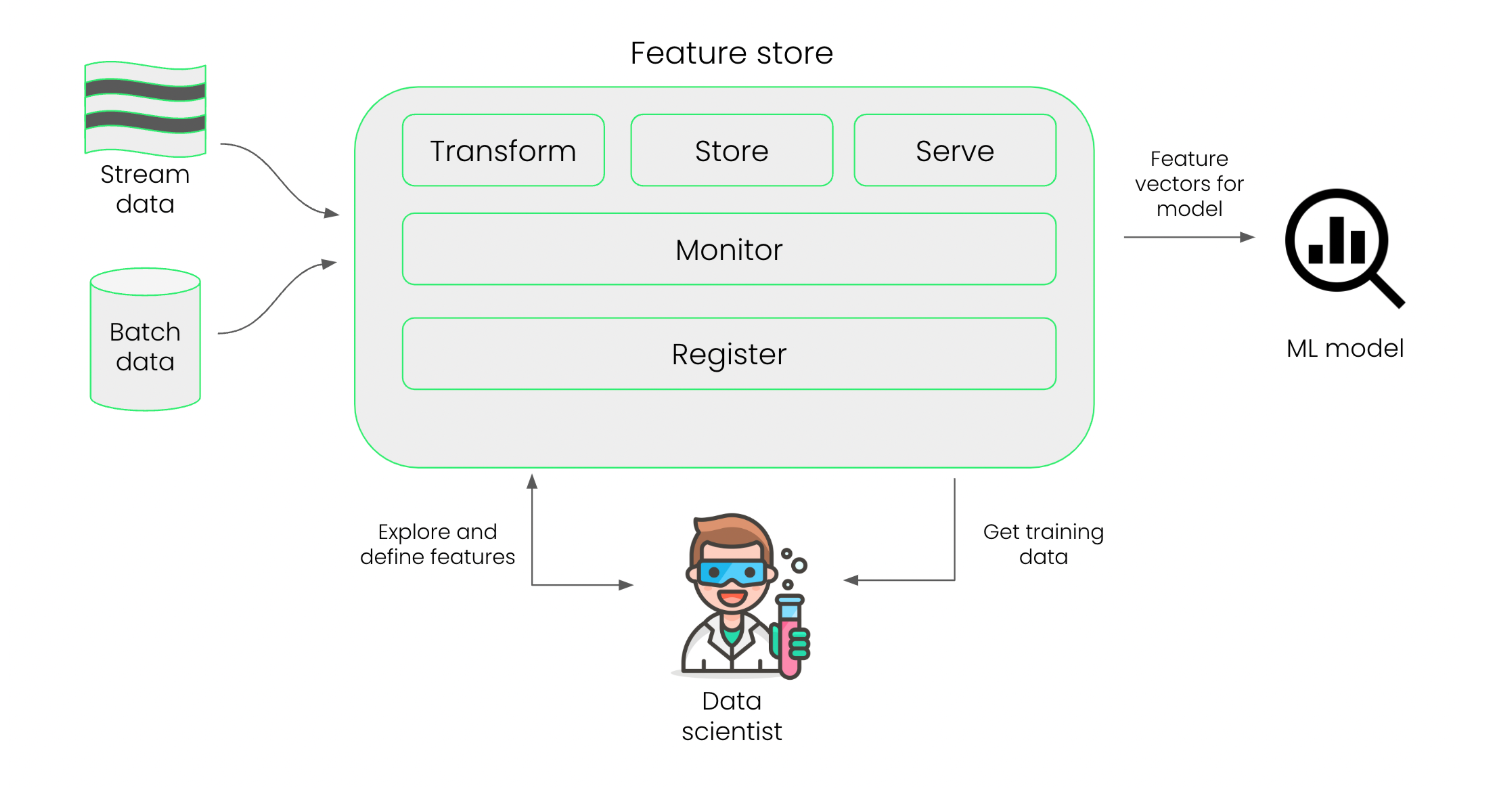Data Versioning
Overview
Tracking data and model versions is essential in machine learning to ensure reproducibility and traceability.
- Easy tracking and rollback of changes to data and models.
- Differentiates large updates from small tweaks.
- Helps identify which data was used for experiments.
- Ensures that model changes are tracked alongside data.
Types of Versioning
Versioning is categorized into two types:
-
Major Versioning:
- Represents significant changes
- Example: Adding new features or methods
-
Minor Versioning
- Indicates smaller updates
- Bug fixes or slight adjustments.
Versioning Training Data
We can version data by labeling it with unique identifiers. For example:
- Version 1.0: Initial dataset.
- Version 1.1: Added data transformations (e.g., scaling).
- Version 1.2: Added feature selection (e.g., Chi-squared).
- Version 2.0: Major update with new data.
Feature Store
A feature store manages the versions of features across experiments, ensures consistent data usage in future tests, and avoids duplication.
For more information, please see Feature Store.

Versioning ML Models
Model versioning allows tracking of model changes over time. For example:
- Model version 1.0: Initial model trained with data version 1.0.
- Model version 1.1: Fine-tuned model with data version 1.1.
- Model version 2.0: New model (e.g., XGBoost) trained with data version 1.2.
MLflow for Model Versioning
Here’s how you can log a model version with MLflow:
import mlflow
# Set version to 1.0
mlflow.set_tag("model_version", "1.0")
# Log model
with mlflow.start_run():
mlflow.log_model(model, "model")
This logs the model version, and you can track changes across experiments.
Model Stores
A model store is like a feature store but for models. It ensures models can be reused and reproduced across experiments.
- Enable version control and rollback
- Works well in tandem with feature stores